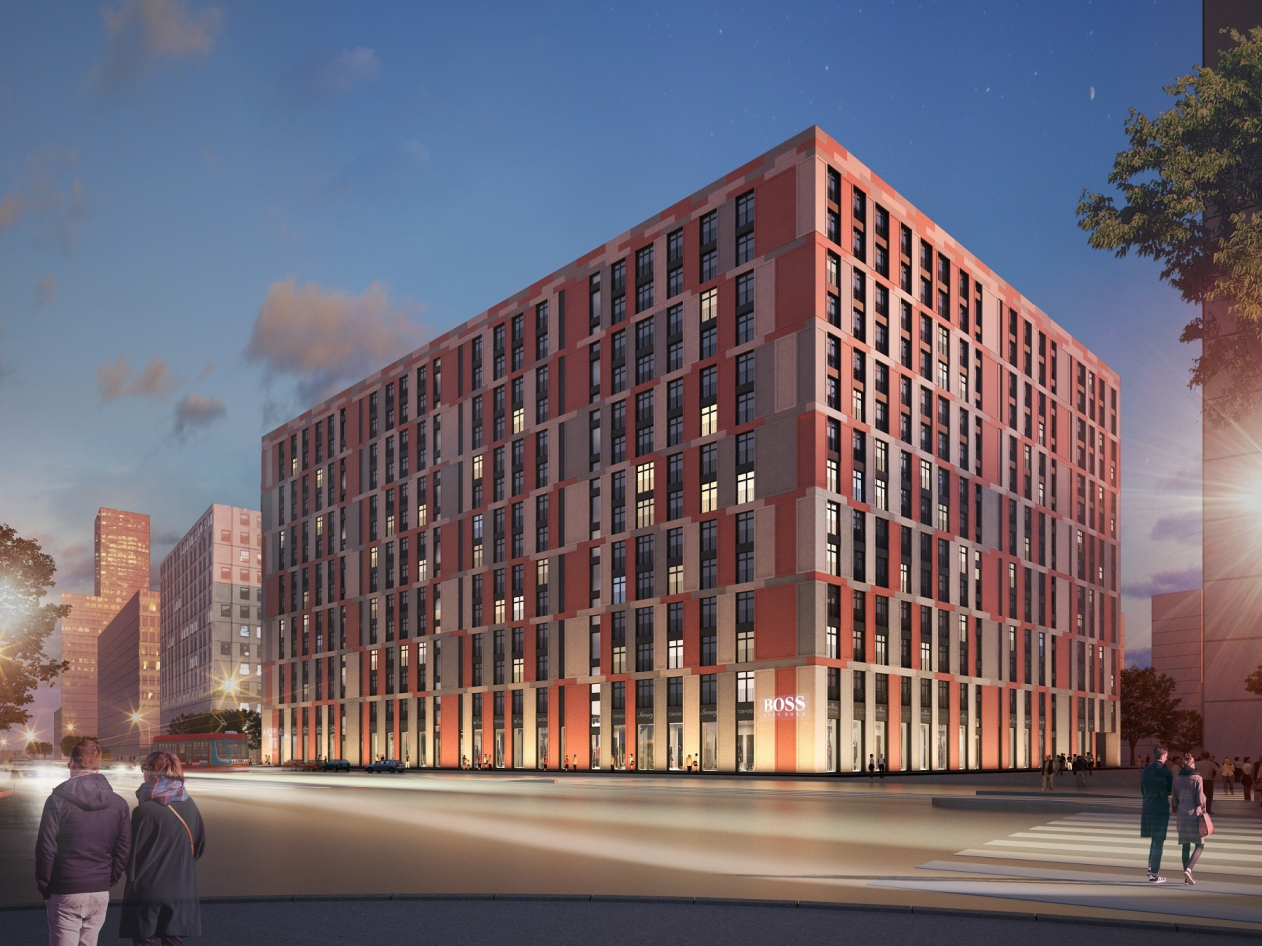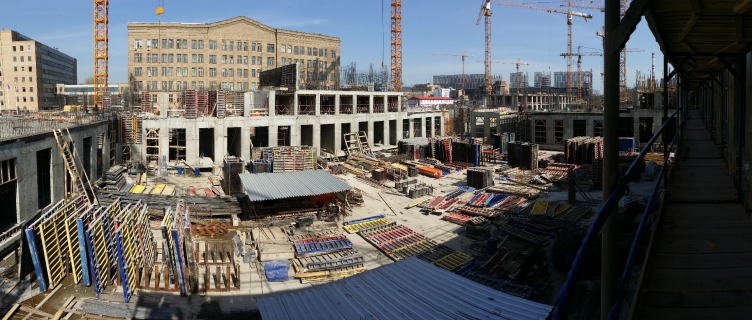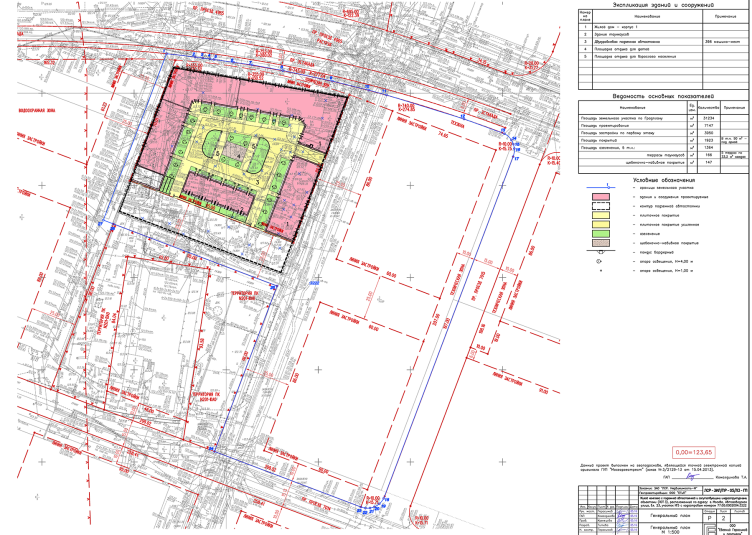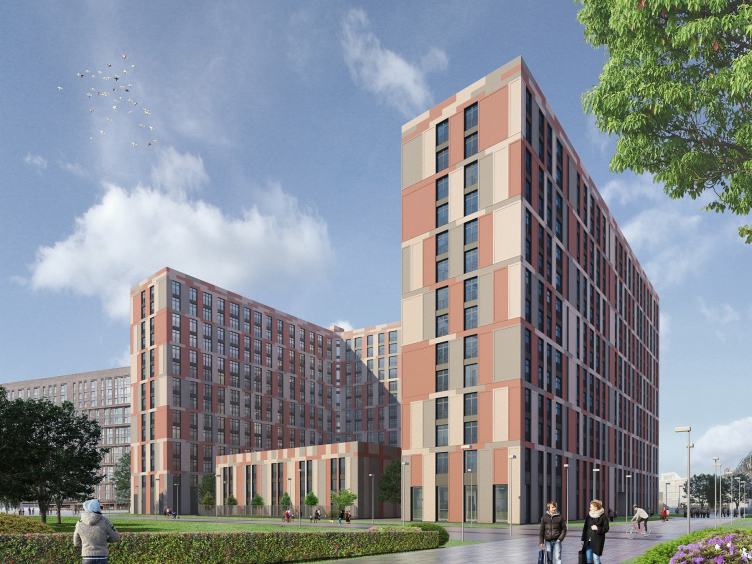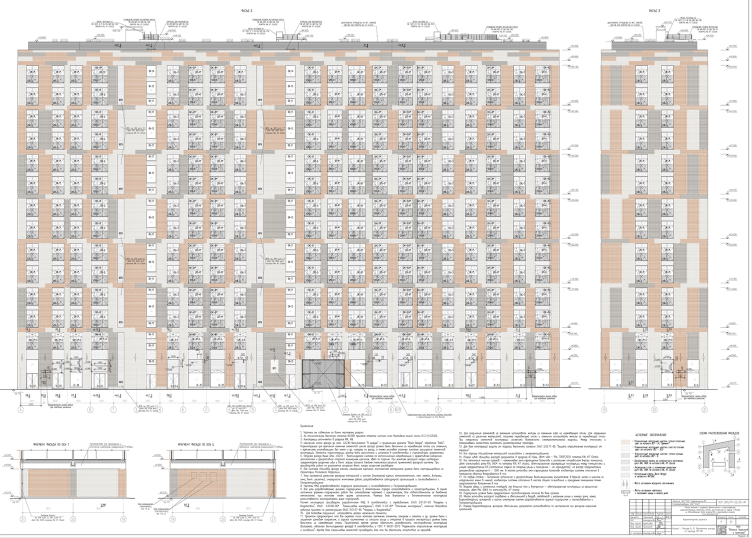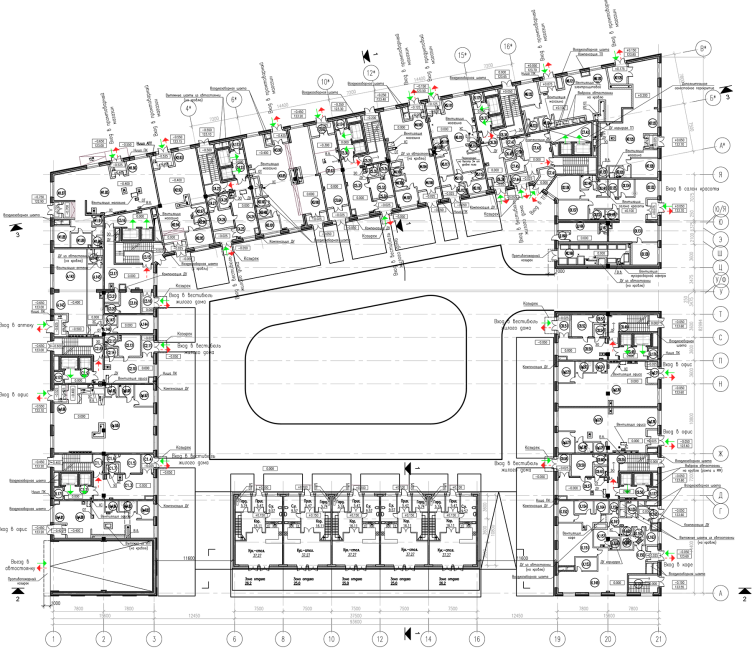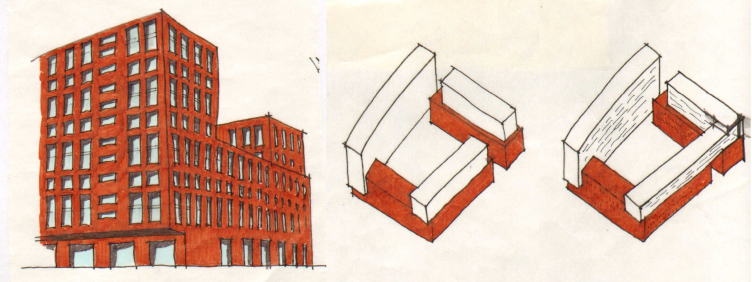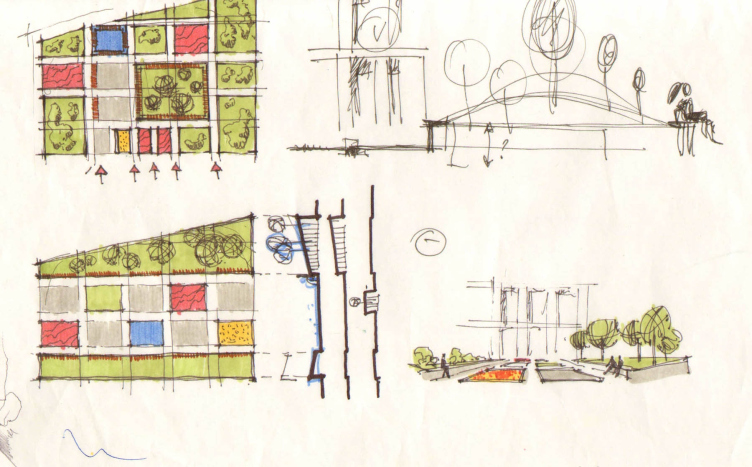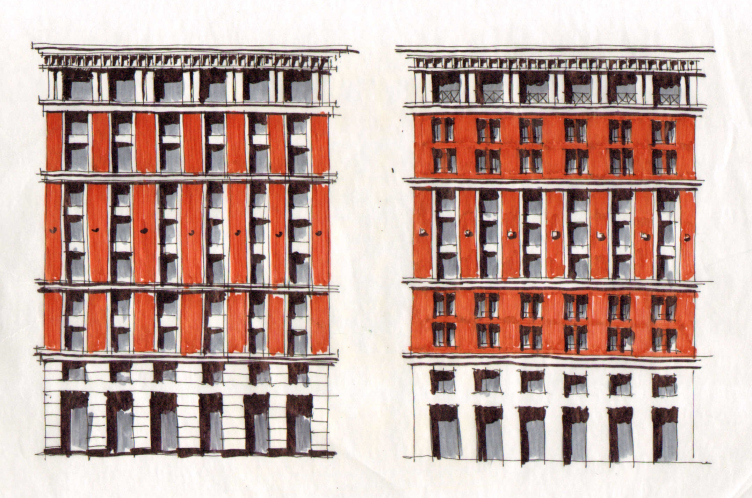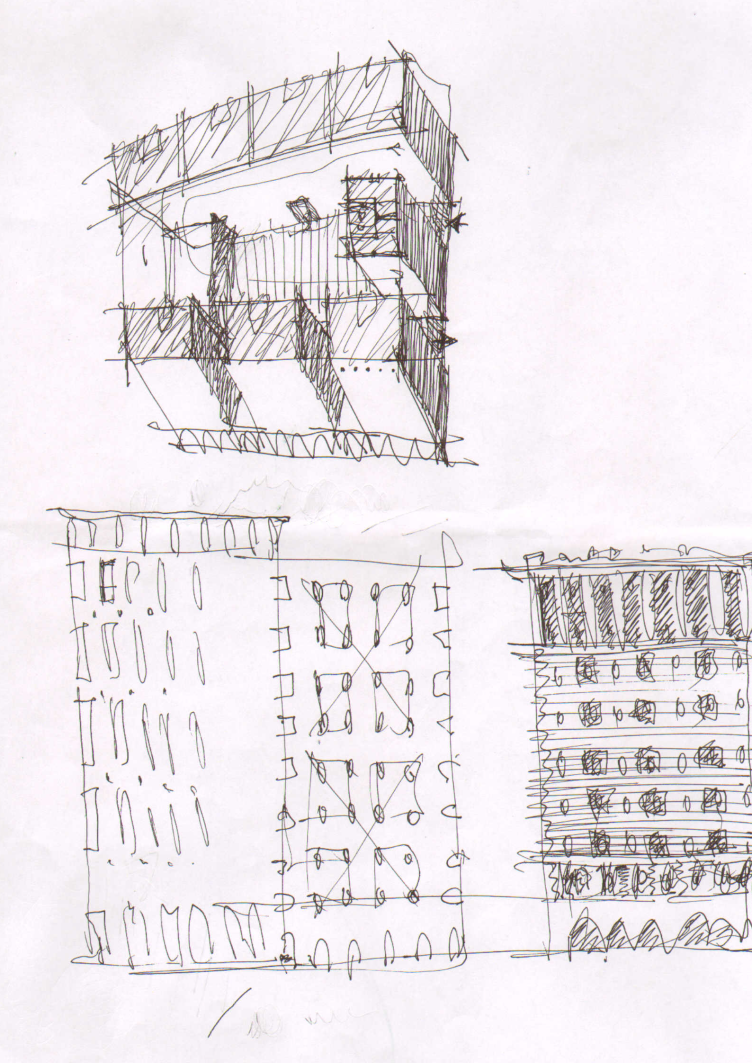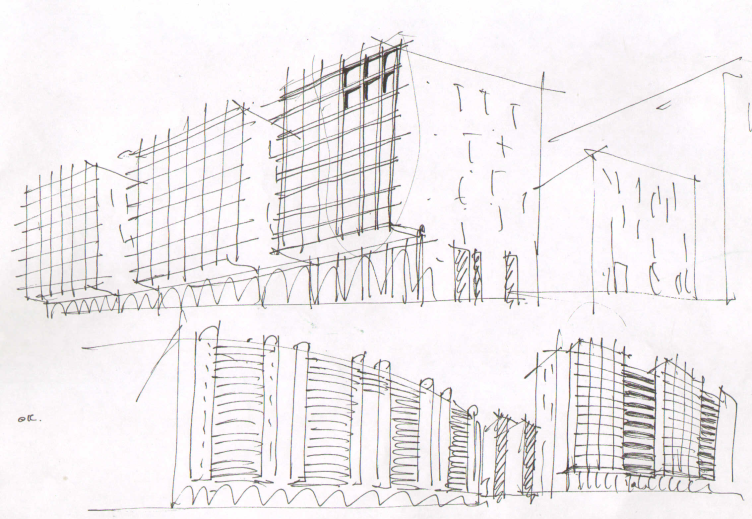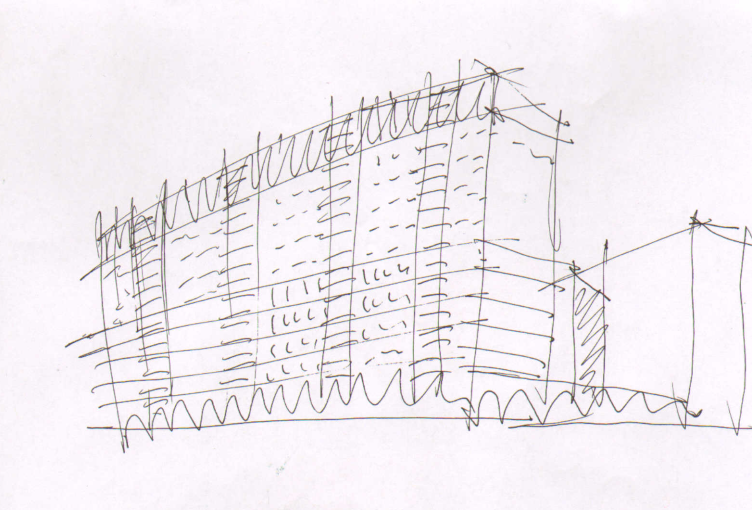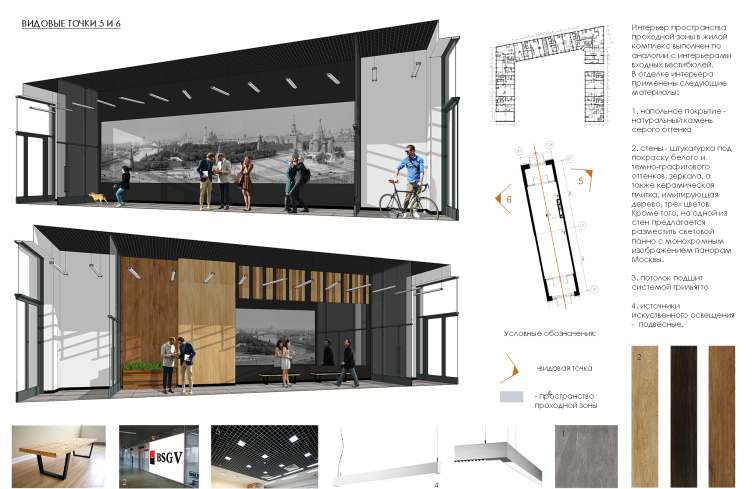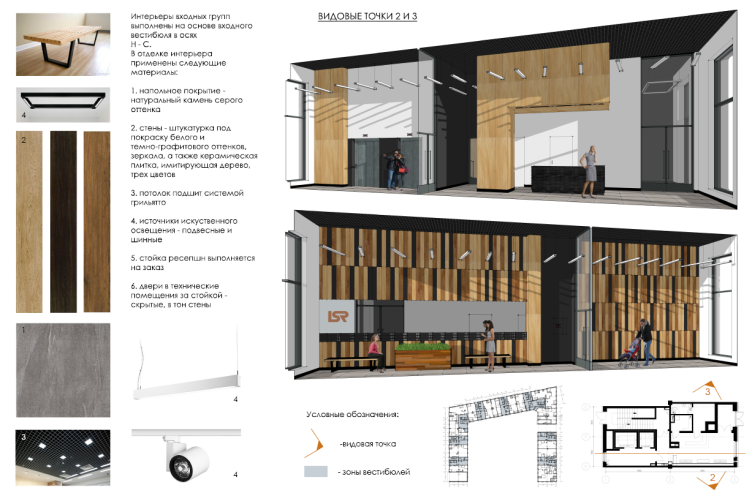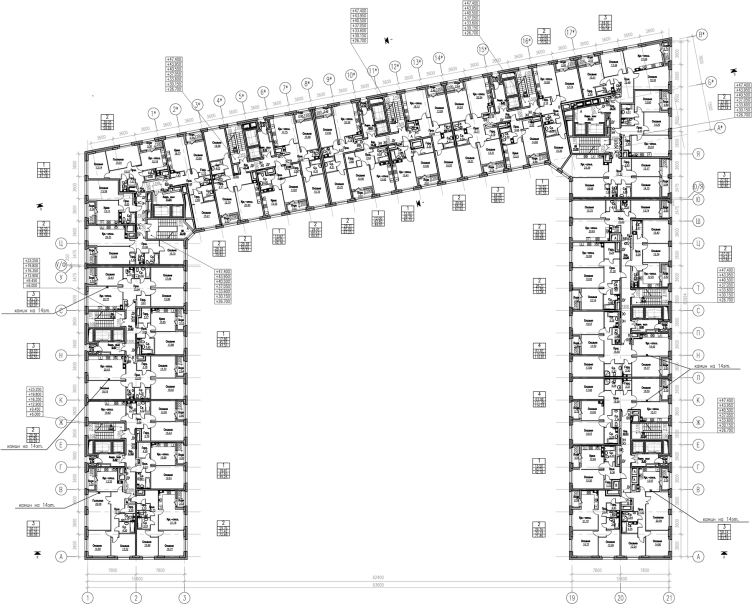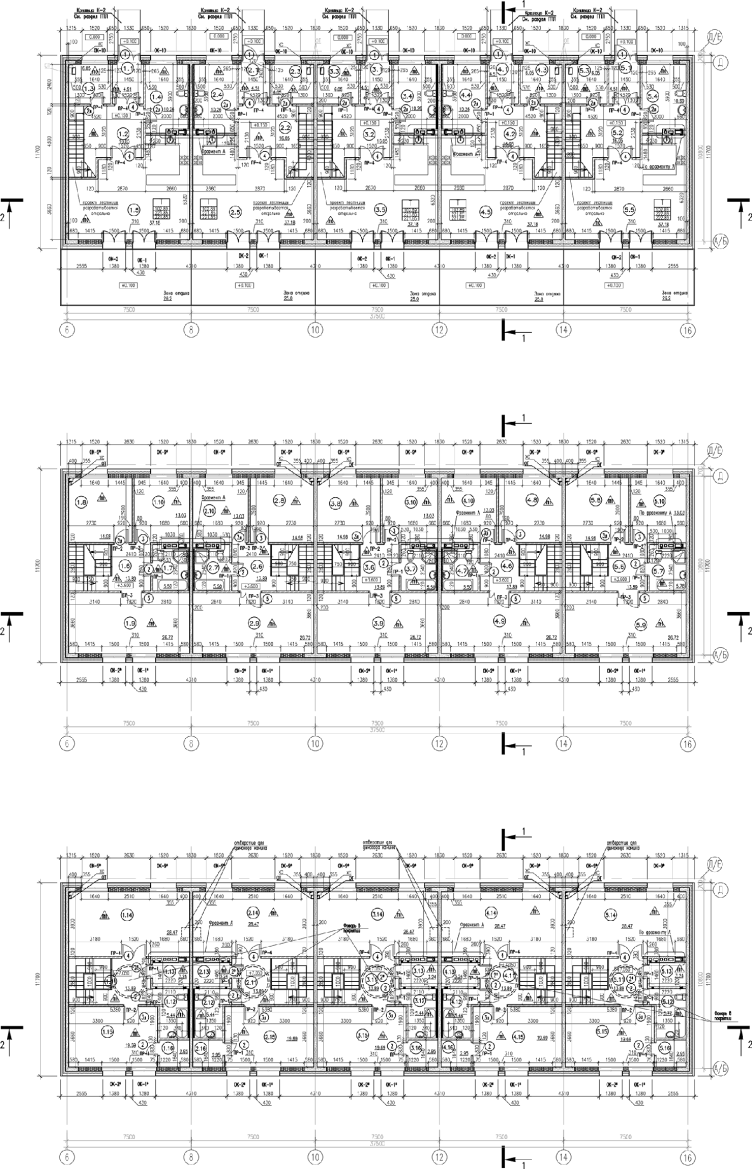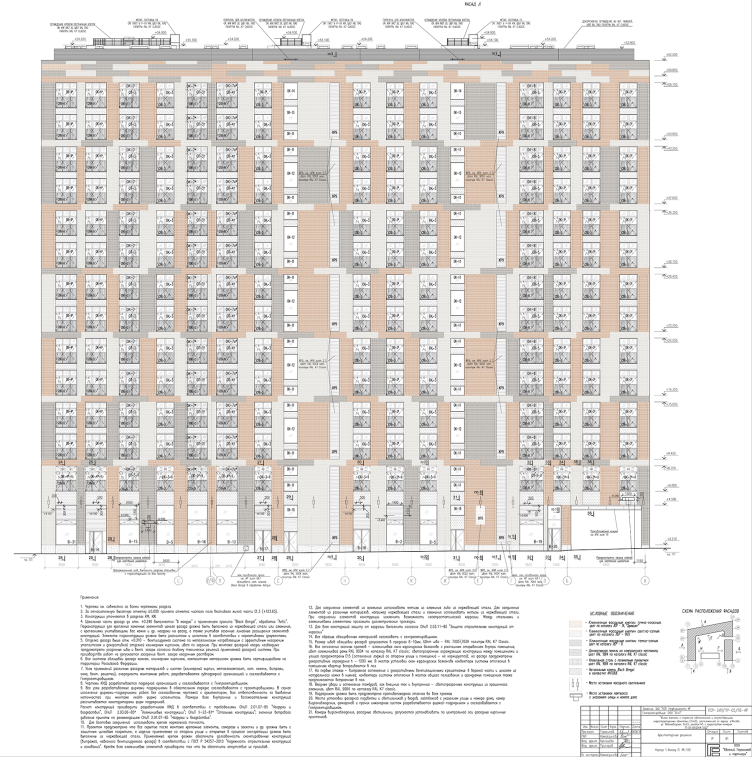At ZilArt, Eugene Gerasimov got to design Lot №3, the one that stands on the northern border of the land site. This border runs along the Proektiruemiy Proezd (literally meaning “Yet-designed Driveway”) №4965 that survived from the industrial past of this territory. On the left and right, one will find streets whose names already belong to the present days – Arkhitektora Golosova and Arkhitektora Ginsburga.
The new “neighbors” that the house got are pretty bright: from the west side this is Lot #1 designed by “Sergey Skuratov Architects” with a side end of fire-red corten-steel, while diagonally from it stands Lot#5 designed by “Tsimailo, Lyashenko and Partners” with elegant open-work slits on a red façade.
At the same time, on the north side, the Eugene Gerasimov house faces a six-story high Engineering Block. Built in the 1950’s, this building that sports a fronton and pilasters is one of the few that survived the renovation of the former industrial park. Yet another surviving building is the red brick two-story fire station upon which the house neighbors from the south – the fire station will be turned into a kindergarten.
ZilArt residential complex © Eugene Gerasimov and Partners
The Engineering Block. View from the construction pit of Lot№3. Photo © Eugene Gerasimov and Partners
ZilArt residential complex. Legend of buildings and structures © Eugene Gerasimov and Partners
The volume-and-space solution and the façades of the house designed by “Eugene Gerasimov and Partners” look like an attempt to reconcile the former and the current ZIL “residents”, which seems to make perfect sense due to the “borderline” position of this house.
ZilArt residential complex © Eugene Gerasimov and Partners
According to the master plan of ZilArt, the house has 14 stories in it. The main unit has almost a perfect U-shape, the only difference being that in the east end the down stroke forms an acute angle. This way, the façade of the house continues the axis set by Lot№1, while the overall pristine geometry echoes the building of the Engineering Block.
In the south part, on the side of the pedestrian promenade, the main unit is adjoined by five blocked three-story townhouses. Together, they form an inside yard. This yard is not exactly of the confined type: there are passages on either side of the townhouses, and an arch in the eastern wing. Nevertheless, the territory is securely fenced from the rest of the ZilArt territory – the whole thing looks like a hint at “well” yards of Saint Petersburg.
ZilArt residential complex. Facades, townhouses © Eugene Gerasimov and Partners
Along the outside perimeter, there are entrances to the shops, a drugstore, a beauty salon, and a cafe; driveways leading up to the residential park are located on the yard side.
The façades are made of Flemish brick, mandatory for all the ZilArt structures. The brick is of three colors – white, gray, and orange, out of which rectangles are formed that are encased in the frames of raised panels standing out. The vertical fracturing is two stories high but, due to the fact that the colors are used at approximately equal proportions, discerning the rhythm is all but impossible. Eugene Gerasimov calls this technique a “programmed chaos”.
ZilArt residential complex. Plan of the 1st floor © Eugene Gerasimov and Partners
ZilArt residential complex. Layout © Eugene Gerasimov and Partners
ZilArt residential complex. Layout © Eugene Gerasimov and Partners
“We believe that our residential house has a shape that conforms to the general standard but each of its elements has a right to be different. All the windows will ultimately look different anyway, and there will never be any order on the façade. Such façade design must, in our opinion, give it certain liveliness; it will look different from different vantage points, and it must generally produce a “mottled” impression, like some sort of quilt” – the author explains.
With its neat grilles of French balconies, the façade indeed looks very cozy. It perfectly matches the image of a residential building the way an average buyer could imagine it. On the inside, everything is also peaceful and appropriate: elevator halls with a finish that’s of high quality but without any excessive decoration, and apartments from 49 to 115 square meters. Some of the top floor apartments have fireplaces in them.
There are also fireplaces in each of the five townhouses with a floor space of 200 square meters. The townhouses are three stories high, and the vertical fracturing of the façades here is also three stories high. The double-time rhythm of the French balconies almost precisely repeats the rhythm of the tall windows of the Engineering Block. The French windows of the first floors of the townhouses command little private gardens separated from the pedestrian street by a railing. The entrances to the residential premises are organized from the side of the yard.
ZilArt residential complex. Layout © Eugene Gerasimov and Partners
ZilArt residential complex. Layout © Eugene Gerasimov and Partners
The two-level underground parking garage served both residents of the townhouses and the main residential building. Its driving entrance is situated on the west side – this way the architects separated automotive and pedestrian traffic. Although the house is actually pretty large – it has more than 400 apartments in it - it does not produce an impression of a bulky thing at all thanks to the façade design. It looks modern, yet not garishly “hot”, original, yet familiar. This is exactly the kind of house that inspires the desire to live in it, and not just admire it from aside.
ZilArt residential complex. Layout © Eugene Gerasimov and Partners
ZilArt residential complex. Layout © Eugene Gerasimov and Partners
ZilArt residential comple. Concept of design of the public and residential part © Eugene Gerasimov and Partners
ZilArt residential comple. Concept of design of the public and residential part © Eugene Gerasimov and Partners
ZilArt residential comple. Concept of design of the public and residential part © Eugene Gerasimov and Partners
ZilArt residential comple. Plan of floors 3-7 © Eugene Gerasimov and Partners
ZilArt residential comple. Plan of floors 8-14 © Eugene Gerasimov and Partners
ZilArt residential comple. Plan of the townhouses © Eugene Gerasimov and Partners
ZilArt residential comple. Facade. Unit 1, facade L © Eugene Gerasimov and Partners
